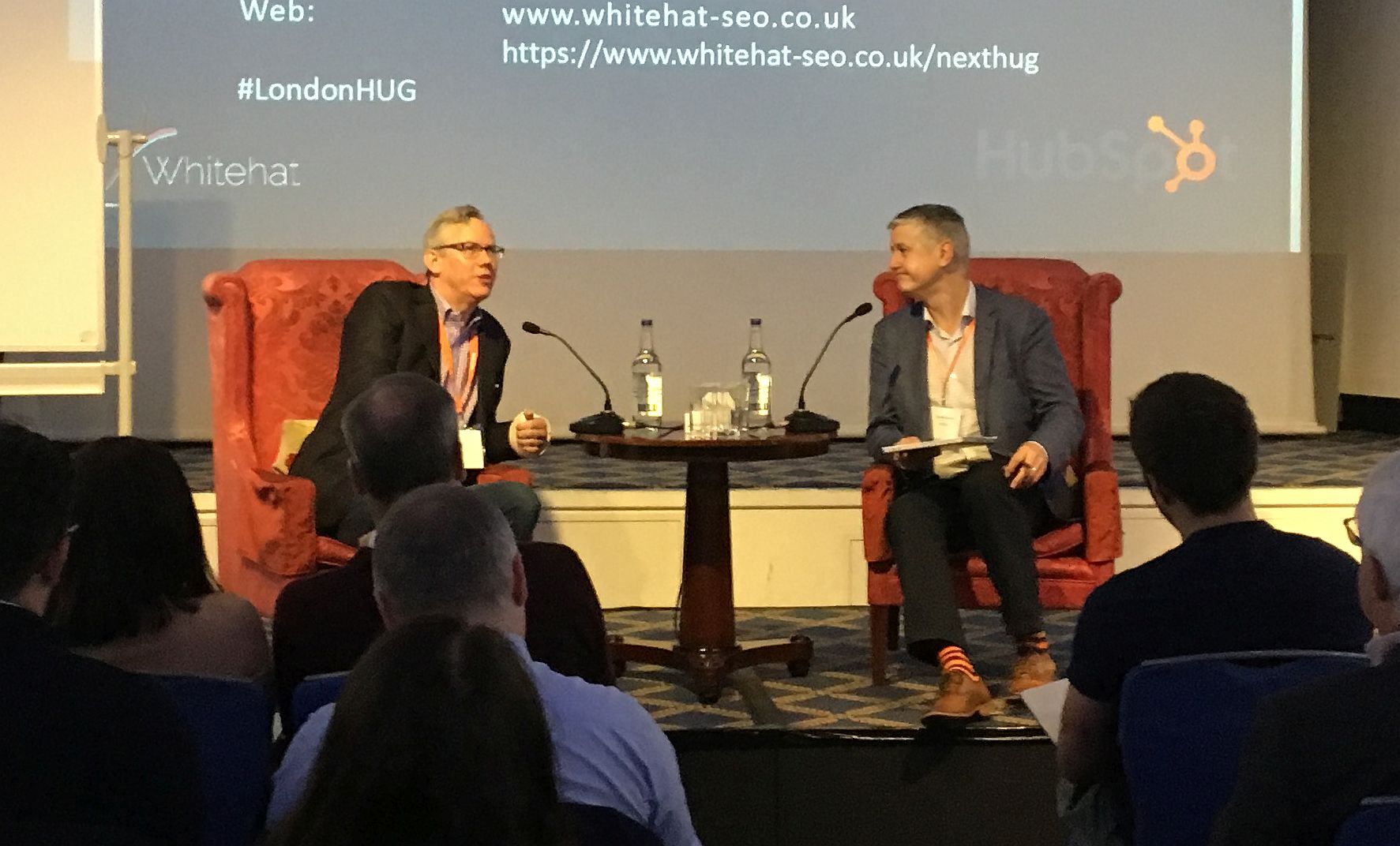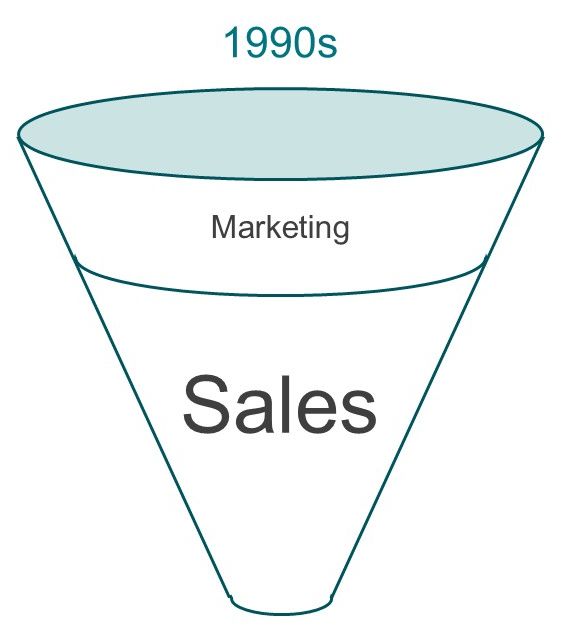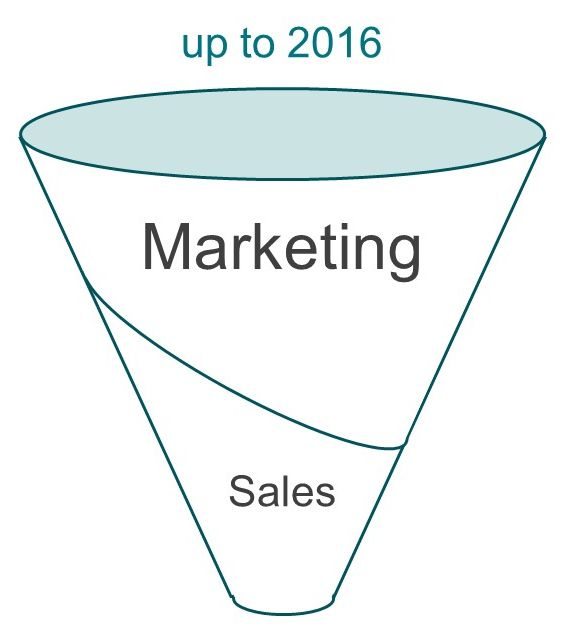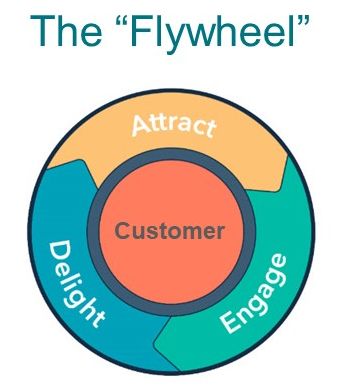Let’s get rid of Marketing

Brian Halligan didn’t say that, but he made me think it. Brian is the founder of Hubspot, the sales and marketing app/suite/platform that has been a huge influencer in the world of business development since 2006. I was fortunate to catch Brian in a “fireside chat” session hosted by Christian Kinnear at the London Hubspot User Group meeting.
Brian is awesome. He is one of those entrepreneurs who come up with truly game-changing concepts that shake up our established perceptions of business for the better. It was at a similar event several years ago that I heard Brian talk about his vision of the Funnel, with an extra layer – Engage. That totally changed my approach to marketing and has formed the foundation of the way I help clients develop their own marketing strategies with Ascent Learning.
Last year, Hubspot announced the retirement of the Funnel and the introduction of the Flywheel. I was horrified, and just didn’t get it. How could they retire such a wonderful concept as the four layer funnel and replace it with a clunky flywheel. This is the problem with hearing about things third-hand, you don’t always get the full story.
Brian explained his Flywheel today in a way that I think could be as big a game-changer as his Inbound and Funnel approaches more than 10 years ago. Let’s roll back a bit.
In the 1990’s email, internet, websites and even mobile phone technology were in their early stages. If you wanted to know about something before you bought it, you talked to a salesperson. The traditional funnel looked like this:

Marketing produced brochures and ran campaigns to generate leads that they passed to the sales team. Sales had the dominant role.
Fast forward to 2016 and in that time the development of information and communication technologies meant that marketing had had a dramatic evolution. Markets and customers had access to unprecedented levels of pre-sales information, and marketing could run highly targeted and sophisticated campaigns. Inbound marketing arrived, the Four Layer Funnel was here and Marketing dominated the sales cycle. In some cases such as on-line retailers, the sales function disappeared entirely.

However, around that time, something else was happening in society. The pillars of the establishment that we once took for granted and trusted completely were shaken. We started to lose faith in our politicians, there were scandals in religion, we uncovered corruption and incompetence in public services and charities and we started to see through the overheated hype of marketing. People no longer trusted what they heard from these establishments. Instead, they would rather trust one another.
People turned to friends, family, colleagues and other people like themselves for advice. Social media made this possible, and Trip Advisor and other review sites turned this into an industry. People became the key influencers of a sale, and the Customer now has an unprecedented role in future sales, both to them and to anyone else.
This is what Brian means when he has put Customers at the hub of his model, with the business activities of Attract, Engage and Delight (Service) spinning around them.

This has some rather scary implications for businesses because the customer is not part of their organisation. They can’t be controlled, only influenced. We have had more than half a century to wrestle with the challenges of Marketing and Sales operating in silos, now we have a third and more important element to include – customer service. If customers now have such an influence on future sales, should Customer Service now be in the driving seat?
I have long advocated disbanding Marketing as a discipline separate from Sales. Both marketing and selling activities support the customers’ buying activities so they need to be under one roof. If “Marketing” are doing any activity that does not contribute directly or indirectly to sales, then it needs to be stopped or passed to another function. It is all about generating more revenue through sales. Let’s not confuse the function with the role or the organisational structure. Marketing and sales activities are still vital, but not managed from different ivory towers.
Now that argument is becoming irrelevant, because it is now product and service delivery functions that influence future sales. So here’s an idea. Let’s create a whole new organisational structure called Customer Service. Within that, there will the three core functions – Communication with customers and markets; Engagement which is where there is human contact between buyer and seller; and finally Service Delivery which is the operational, customer-facing delivery function. Instead of KPIs majoring on Leads, Conversion Ratios and Pipeline, we will have KPIs majoring on Customer Experience and Satisfaction. We will recognise that we are playing a long game, and customer delight will determine future sales much more than marketing campaigns and sales effort.
One final thought, again highlighted by Brian Halligan. The new disruptive kids on the block that are making such major inroads into established industries are not actually doing anything new. Uber is a taxi service. Deliveroo is food delivery. Dollar Shave sell razors. All, without exception, are winning not with innovative products but because they have transformed the customer experience. Doesn’t that new business model now make a lot of sense?
Neville Merritt
